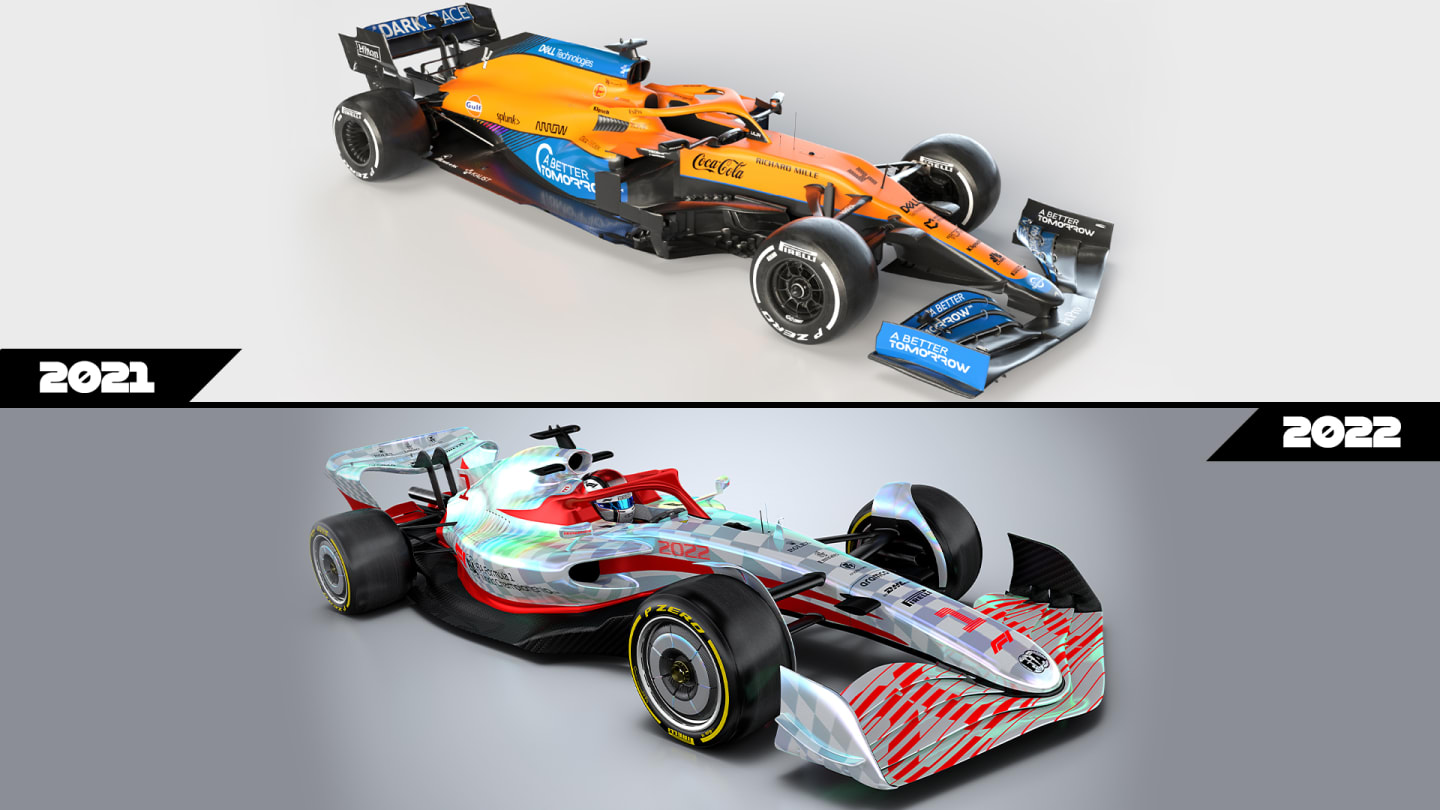
Feature
ANALYSIS: Comparing the key differences between the 2021 and 2022 F1 car designs
Share

So by now you probably know F1 cars are changing in design in 2022, with the primary aim of giving the drivers the tools with which to race closer and harder than ever. But how does the car differ from the current model? We take a look at the key differences…
Front wing
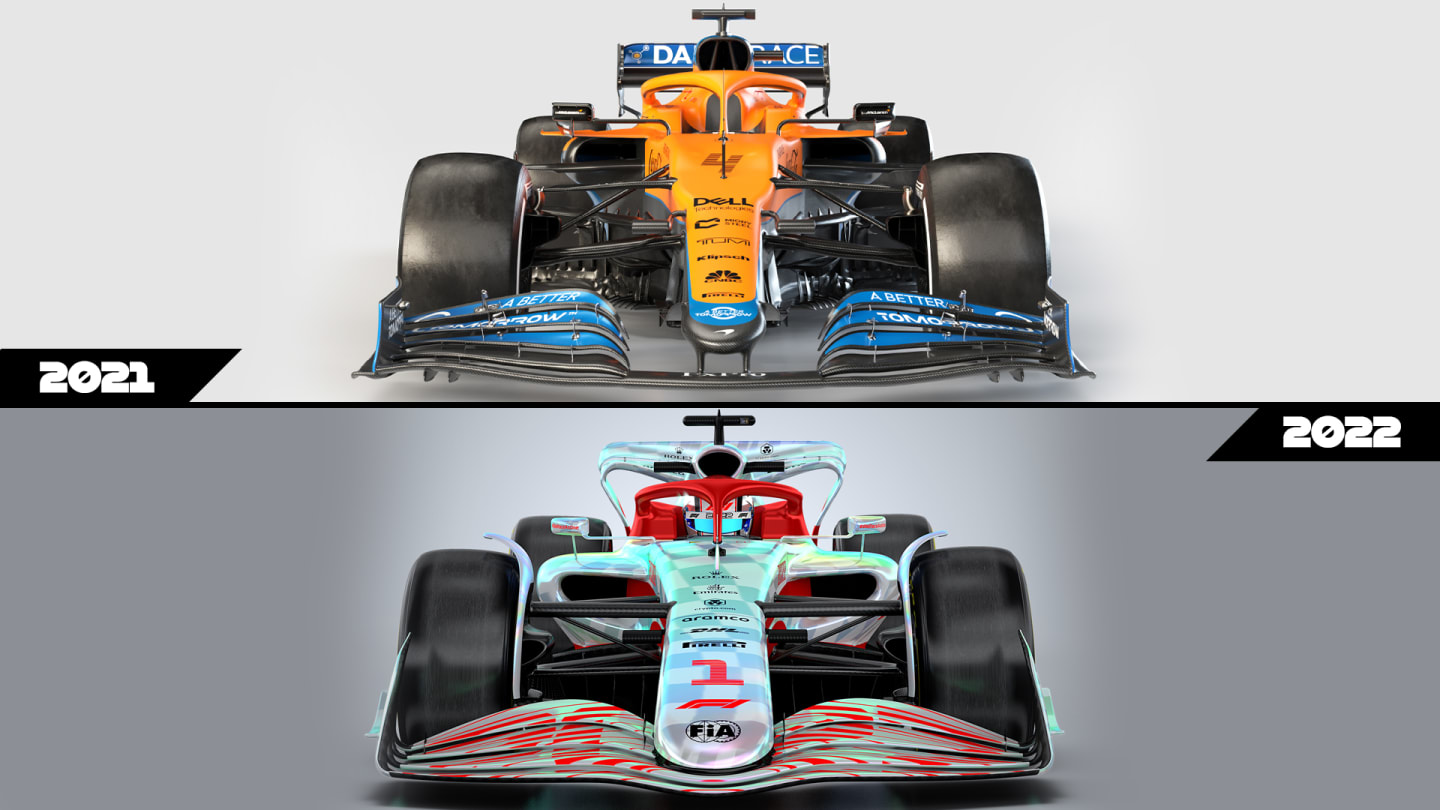
The first difference you notice between the 2021 front wing and the 2022 one is that they are a completely different shape, from the alignment of the elements themselves to the shape of the endplates. The 2022 version is designed to be a lot more ‘neutral’ than the current generation of highly complex designs, meaning it’s less aerodynamically sensitive when a driver is running close behind another car and directs airflow in a less disruptive way.
Remember, ‘dirty air’ – the heavily disrupted airflow coming off a car – is one of the major reasons why drivers struggle to follow one another closely, and it’s the key challenge the designers of the 2022 car have tried to tackle to ensure close racing.
Another thing that will help is the disappearance of the so-called 'Y250 vortex' - the name given to the vortex that comes off the inner tips of the current generation of front wing flaps and affects pretty much everything behind it. With the inner tips now effectively gone, the challenge of controlling this vortex - especially when following another car, is gone.
GALLERY: A first look at the life-size 2022 F1 car, after drivers get up close at Silverstone
Wheels and tyres
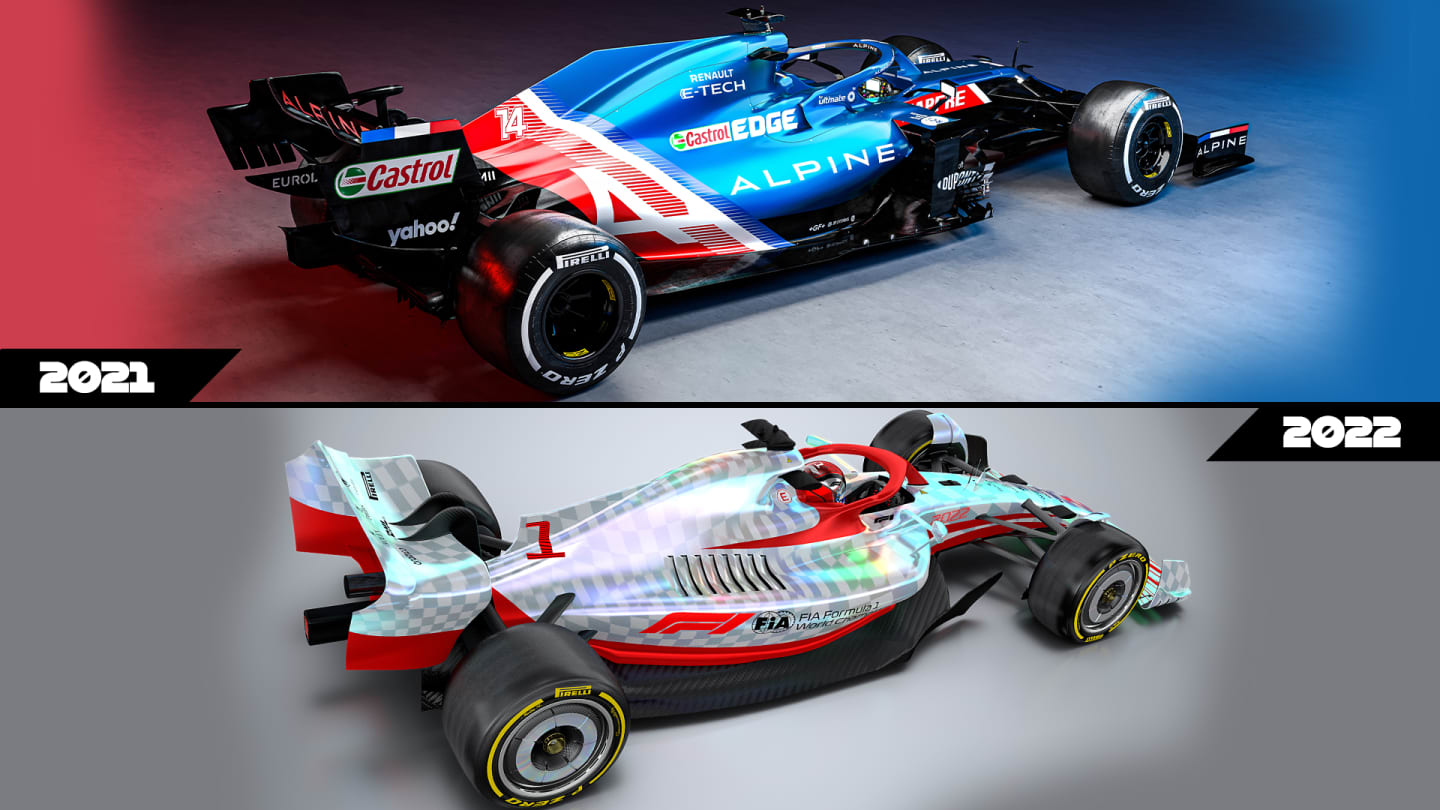
Easy to spot the difference here. For as long as most fans will remember, F1 cars have used 13-inch wheels. But that will change in 2022 when F1 moves to 18-inch wheels with low-profile tyres, giving the cars a contemporary, aggressive look.
Another difference is the introduction of wheel covers, which have been used in F1 before, but are now mandatory to help keep airflow clean and limit what teams can do around the tyres aerodynamically. The introduction, for the first time, of over-wheel winglets (or ‘wheel wake control devices’, to give them another name) is another solution to help maintain clean airflow.
Rear wing
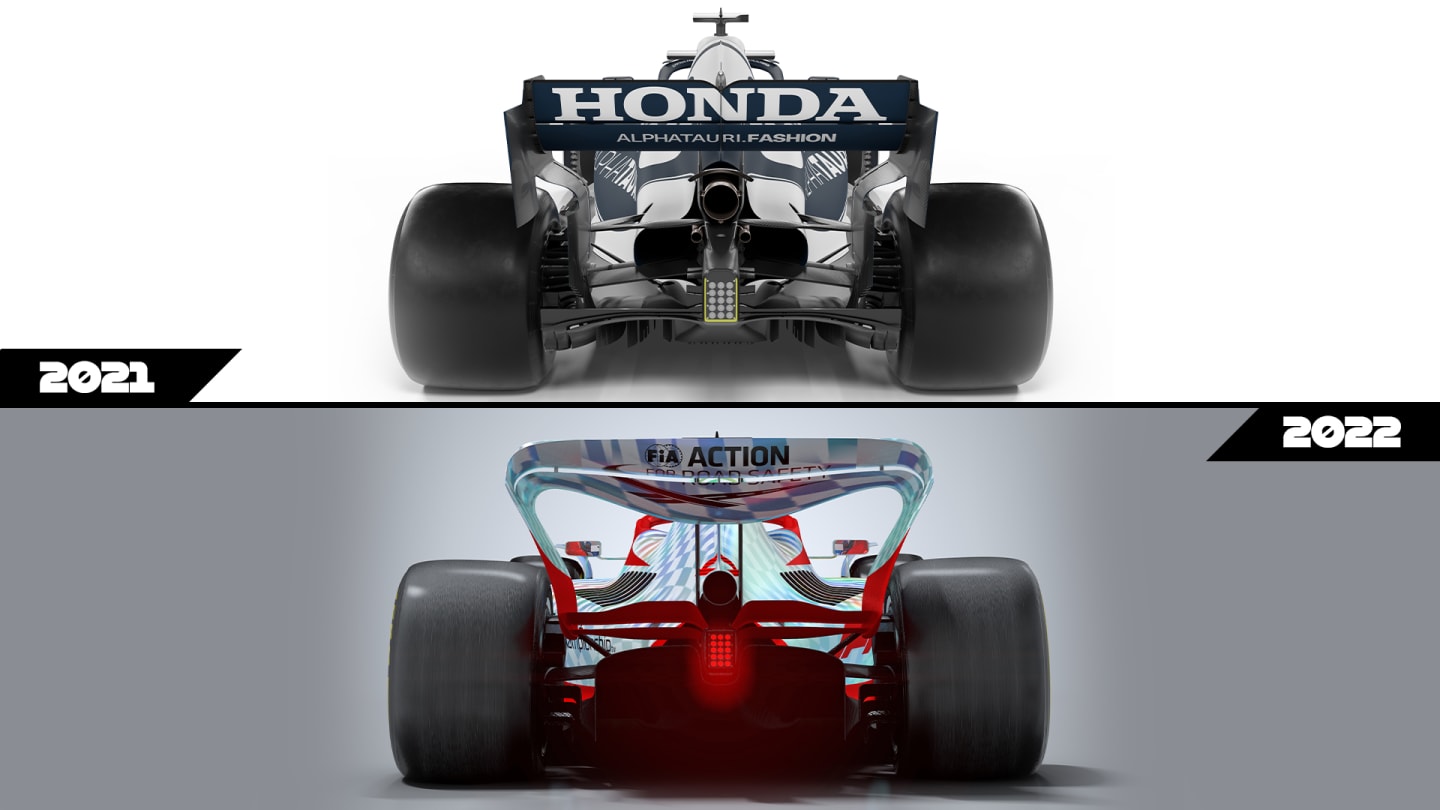
Again, when it comes to shape, there are minimal similarities between the 2021 rear wing and the 2022 version. In fact, the retention of the Drag Reduction System (DRS) moveable flap in the rear wing is about the only similarity with the current car.
Visually, the 2022 rear wing is a very different, with its upper ‘rolled tips’ rather than straight endplates and additional lower elements. The new design is specifically to draw the aerodynamic wake (the airflow coming off the car) up and over the following car rather than directly into it – a factor that has made it hard for drivers to follow in the current era.
READ MORE: 10 things you need to know about the all-new 2022 F1 car
Floor
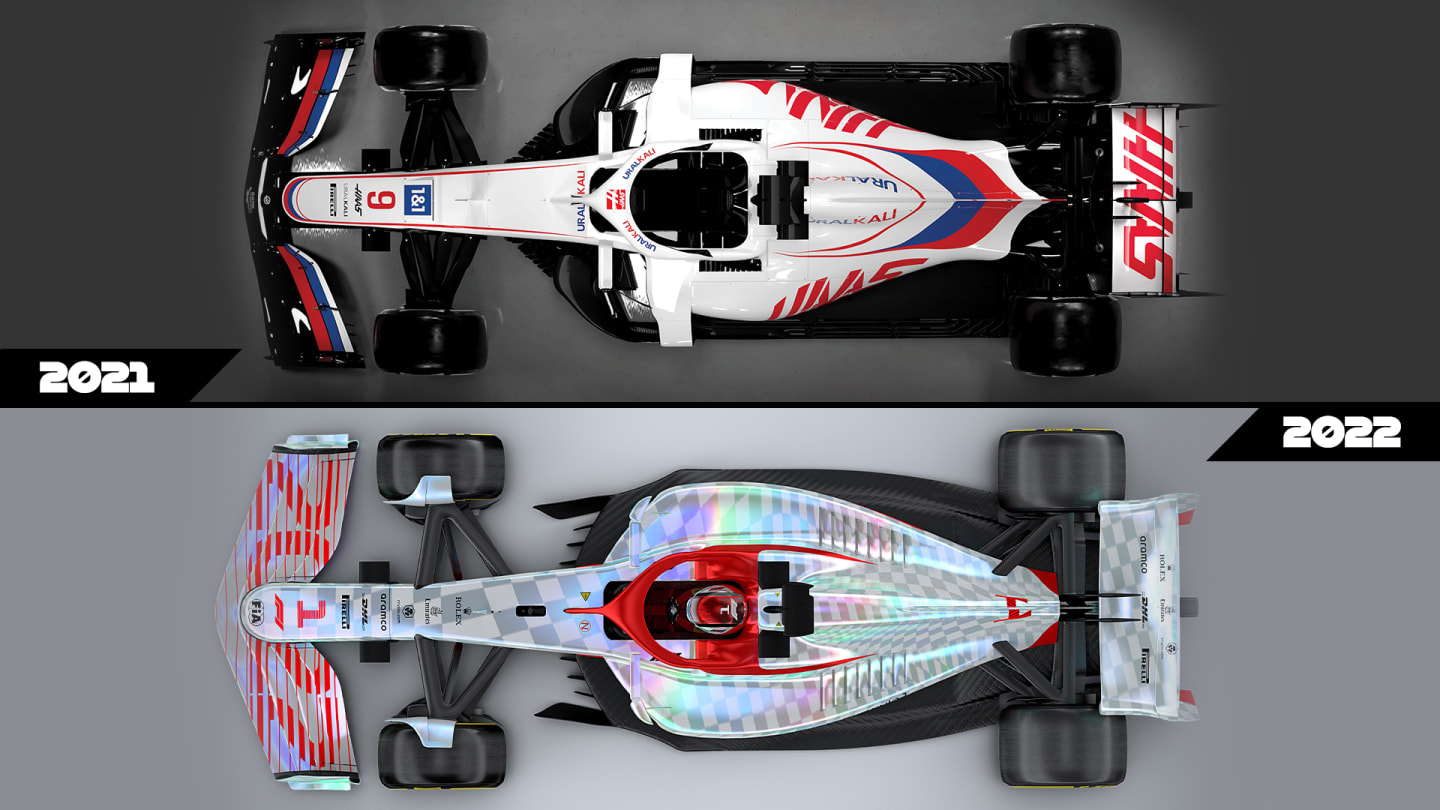
OK, so it may seem strange to compare the floor of an F1 car with shots from overhead, but from this view you can see the clear difference in shape between the 2021 and 2022 floors. Underneath (not visible) the 2022 car features fully shaped underfloor tunnels, rather than the stepped floor used currently.
This change in floor shape will allow the teams to create large amounts of downforce through ground effect – downforce that will be less impacted when following another car – and at the same time produce less disruptive airflow for the car behind.
Bodywork
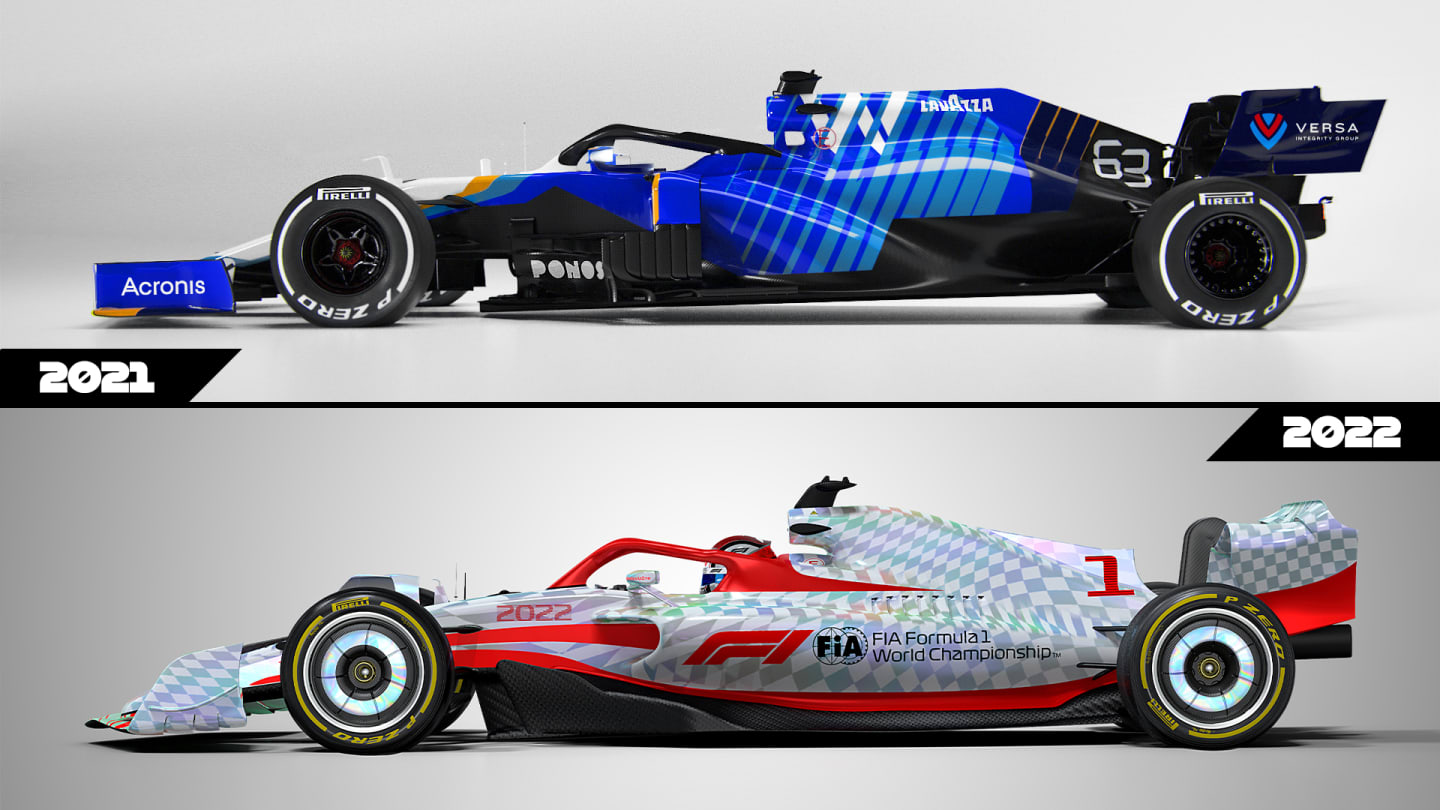
Looking at the two cars in profile, it’s clear that the 2022 car is a lot cleaner, especially around the area either side of the cockpit where the current bargeboards and other bits of aerodynamic furniture seen on the 2021 car – used to tweak and cajole airflow along the car – no longer form part of the design.
And keep your eyes peeled for the return of cooling exit louvres on the bodywork, which were banned post-2008, but are permitted again for 2022 and will be a key area of freedom for the teams to exploit.
Weight
Not something we can picture, but the weight of cars is going up by 5%, from 752kg to 790kg. Why? First of all, the new wheels are heavier – overall the four wheels and tyres are around 14kg heavier than in 2021. However, given that the new tyres have been designed to be less prone to overheating, amongst other things, most fans would agree that’s a price worth paying.
The other factor that has affected the weight of the car is the increased safety requirements, with the magnitude of crash tests being increased to ensure drivers will be better protected than ever before.
SIDE-BY-SIDE: How the 2021 and 2022 Formula 1 cars compare
YOU MIGHT ALSO LIKE
News 'That's what you need to fight for a championship' – Verstappen reveals key Piastri trait that could help him in title battle
News ‘I’m 2000% behind him’ – Vasseur backs Hamilton amid early Ferrari struggles as he insists ‘potential is there’
News Minor refinements to 2025 regulations agreed at F1 Commission meeting
News ‘I will see how motivated I am’ – Alonso opens up on his F1 future post-2026 as he insists he doesn’t want to ‘compromise’ Aston Martin
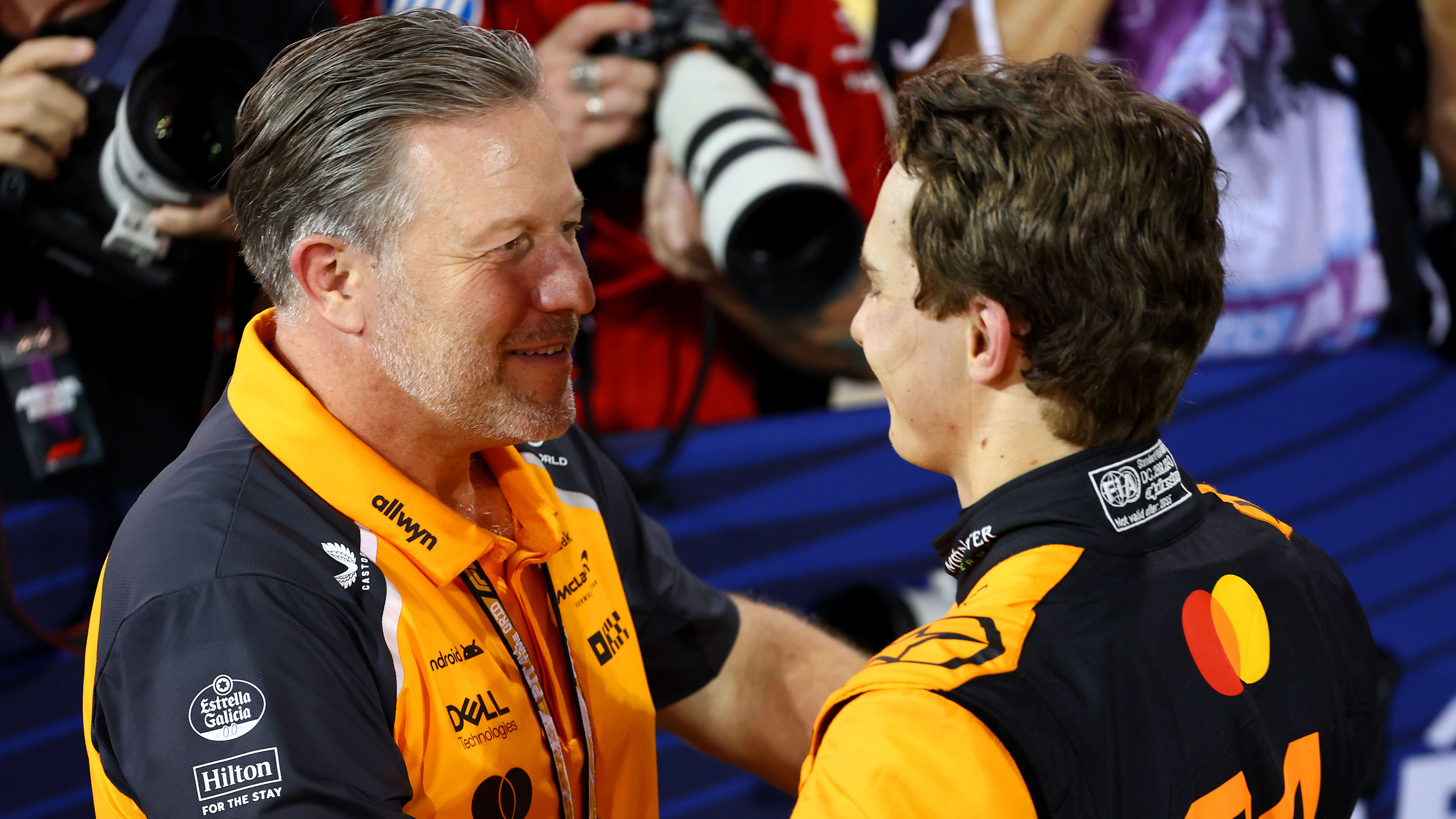

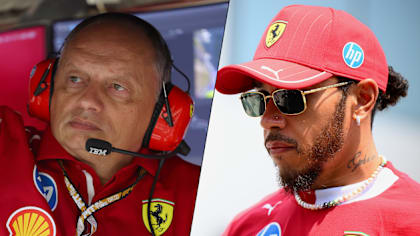
)
